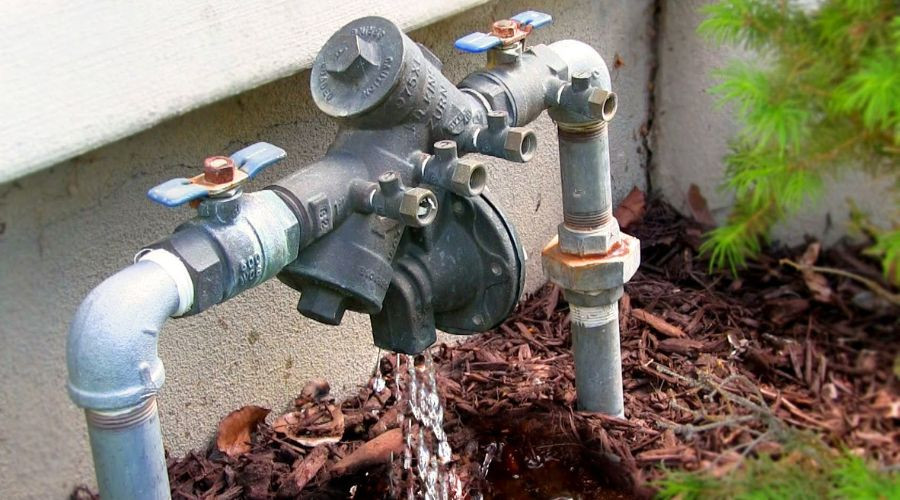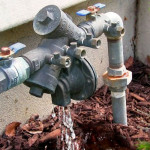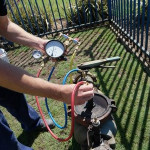What is Backflow?
Water is usually supplied to a home via a municipal water system or an on-site well. Water flows into the house and out of fixtures connected to the supply pipes. Backflow is just what it sounds like. It’s when water flows in the opposite direction than intended. This normally happens because of a sudden and extreme change in water pressure. While the idea of reverse water flow is not dangerous in and of itself, serious water contamination can occur if backflow preventers are not working properly.
Why Should Homeowners Be Concerned About Backflow?
 The major problem with backflow is water contamination. The water that enters homes has been filtered or prepared in a way that allows it to be safe. When backflow occurs, wastewater that is supposed to be moving away from the home or building can contaminate the clean, treated water entering houses. This means that anything put down drains can pollute the potable water on the supply side, making it dangerous not only to the household but to the rest of the area using that water source. Below are some examples of contaminants that can enter treated water due to backflow and cause health problems:
The major problem with backflow is water contamination. The water that enters homes has been filtered or prepared in a way that allows it to be safe. When backflow occurs, wastewater that is supposed to be moving away from the home or building can contaminate the clean, treated water entering houses. This means that anything put down drains can pollute the potable water on the supply side, making it dangerous not only to the household but to the rest of the area using that water source. Below are some examples of contaminants that can enter treated water due to backflow and cause health problems:
- Bacteria
- Chemicals
- Corrosives
- Human waste
- Microbes
- Viruses
This is why most cities require backflow preventers to be tested annually to prevent this sort of public health issue. Even if backflow testing isn't required, it is highly recommended to protect against contamination.
The Process of Backflow Testing
 Testing a backflow preventer must be done by a certified backflow tester, a plumbing professional with training specific to the preventer apparatus and the testing equipment. Once the test is scheduled, it should be a quick and easy process, usually lasting about thirty minutes to an hour. Below are the general steps in the backflow testing process without getting into a bunch of technical jargon.
Testing a backflow preventer must be done by a certified backflow tester, a plumbing professional with training specific to the preventer apparatus and the testing equipment. Once the test is scheduled, it should be a quick and easy process, usually lasting about thirty minutes to an hour. Below are the general steps in the backflow testing process without getting into a bunch of technical jargon.
- Shut off Water: The supply main has to be shut off to properly check the backflow preventer and prevent contamination from happening simply by performing the test.
- Check Air Chambers: Backflow preventers have a series of valves and air chambers to prevent contamination. Checking the pressure in the air chambers ensures that it is functioning properly.
- Check Valves: Do the valves open and close at the right pressure to prevent backflow? This is what the technician is looking for.
- Check Relief Valve: This part of the apparatus keeps pressure from building up. It must open under a certain pressure to do its job properly.
Why Backflow Testing is So Important to Public Safety
From the reasons outlined above, it’s easy to see that backflow testing is important. Ensuring that backflow preventers are working properly helps preserve the health and safety of the community. Outbreaks of illness or poisoning could otherwise result from a backflow incident.
A homeowner should verify their city’s codes on backflow preventers and make sure theirs is checked regularly to prevent water contamination. If the backflow preventer isn’t working, professionals can make the necessary repairs to fix it before a backflow incident hurts public health.
About Sheely Plumbing Inc.
Sheely Plumbing Inc. is a family-owned and operated plumbing company serving Alto, MI, and the Greater Grand Rapids Area. They offer flat rate pricing, same or next-day service, and 24-hour emergency service. Call them today for backflow testing and repair in Alto, MI.

































